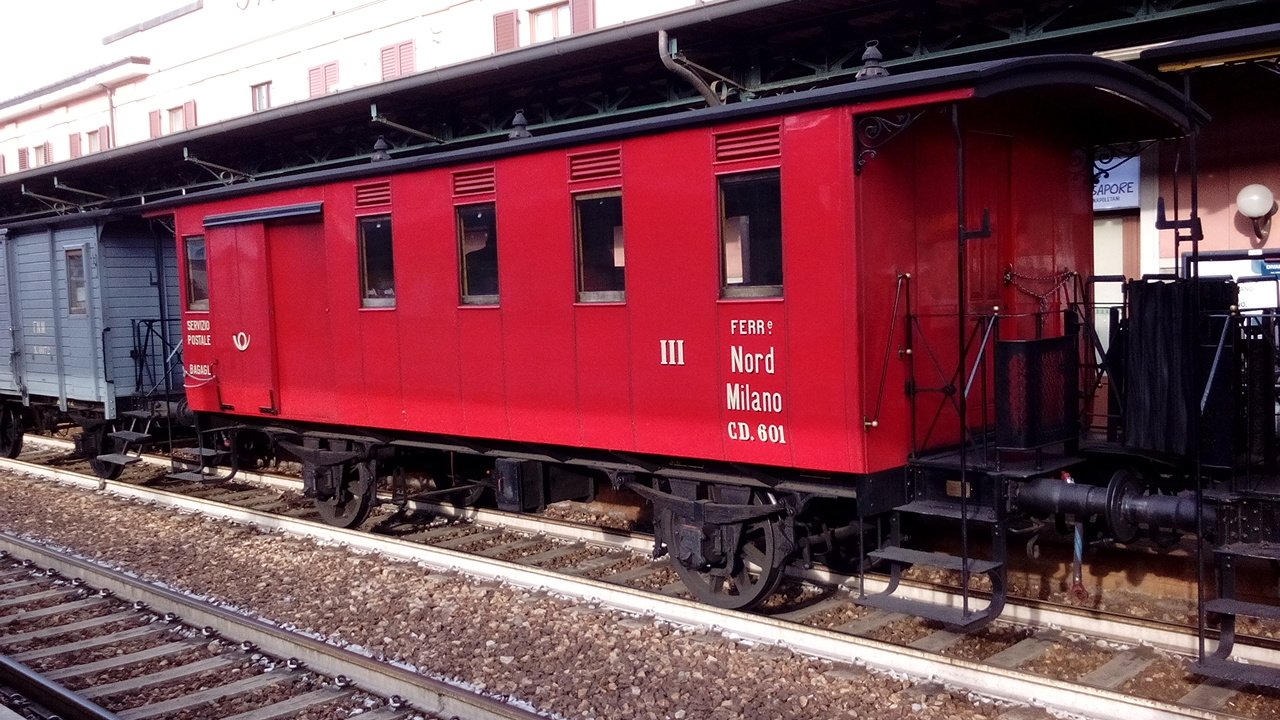The CD 601 baggage/third-class mixed coach was originally built by DIATTO of Turin in 1883 for S.A. Ferrovie del Ticino as a D 656 baggage coach and was later incorporated into the FNM storage yard. It is the oldest coach in circulation in Italy. It underwent several changes over the years, and until 1973 it was the workshop coach of FNM’s Electrical and Signalling Department. The coach features all the same characteristics as the first FNM coaches built by SIG in Neuhausen. Metal chassis, access via platforms at either end, leaf springs suspension, 2-axle with spoked wheels. The wooden body has a sheet metal exterior. The flat roof is covered with waterproof tarred canvas. Access is via two platforms at each end with gates and railings. Its weight is just 11 tons, and its capacity is 3 tons. In 1974 it was carefully restored in vermilion red as the baggage/third-class mixed coach to be added to the historic train.
CD-601

- Progettazione: 1883
- Costruzione: 1883
- Esercizio: 1883-presente
- Massa in servizio: t.11
- Ruote Ø: 1.060 mm
- Costruttore: DIATTO - Torino
- Lunghezza fuori tutto: 11.000 mm
- Passo rigido: 5.000 mm
- Velocita massima: 70 Km/h
- Illuminazione: elettrica
- Altezza imperiale: 3.500 mm
- Posti a sedere: 46 posti
- Freno: Continuo
- Portata: t. 3
- Livrea: rosso solferino
- Design date: 1883
- Build date: 1883
- Service date: 1883-present
- Service mass: 11 tons
- Wheel Ø: 1,060 mm
- Builder: DIATTO - Turin
- Overall length: 11,000 mm
- Rigid wheelbase: 5,000 mm
- Maximum speed: 70 Km/h
- Lighting: electric
- Roof height: 3,500 mm
- Passenger capacity: 46 seats
- Braking system: Continuous
- Load capacity: 3 tons
- Livery: vermilion
Inside, the body is divided into two sections: the mail/baggage compartment and the third-class compartment. The baggage compartment has two large sliding doors, one on each side. The coach can also be loaded with bulky goods, parcels or passenger luggage such as trunks and suitcases. When not in use, the baggage compartment can be occupied by passengers with the doors closed and also has 4 benches to seat a total of 8. Sliding doors also give access to the entrance platform on one end, and the third-class compartment on the other, which seats 38 passengers. The benches are more basic than those in second class. The windows are of a simpler type compared to the first-class coaches. They consist of a retractable frame in varnished wood that can be lowered. The retractable wooden sun blind can also be lowered. Lighting is provided by 3 electric lights housed in the original ceiling fixtures which originally contained oil lamps.

